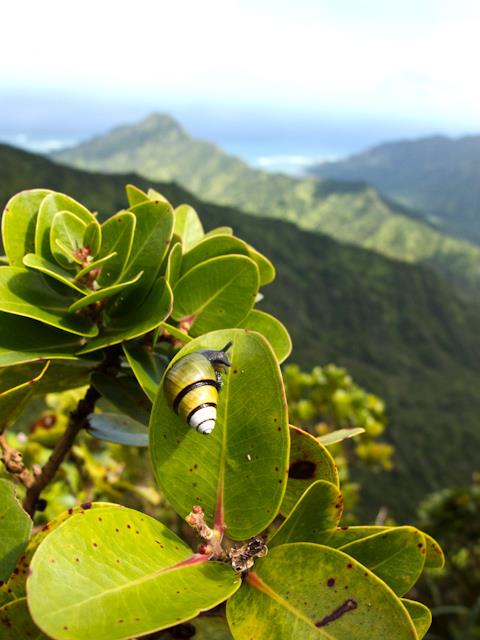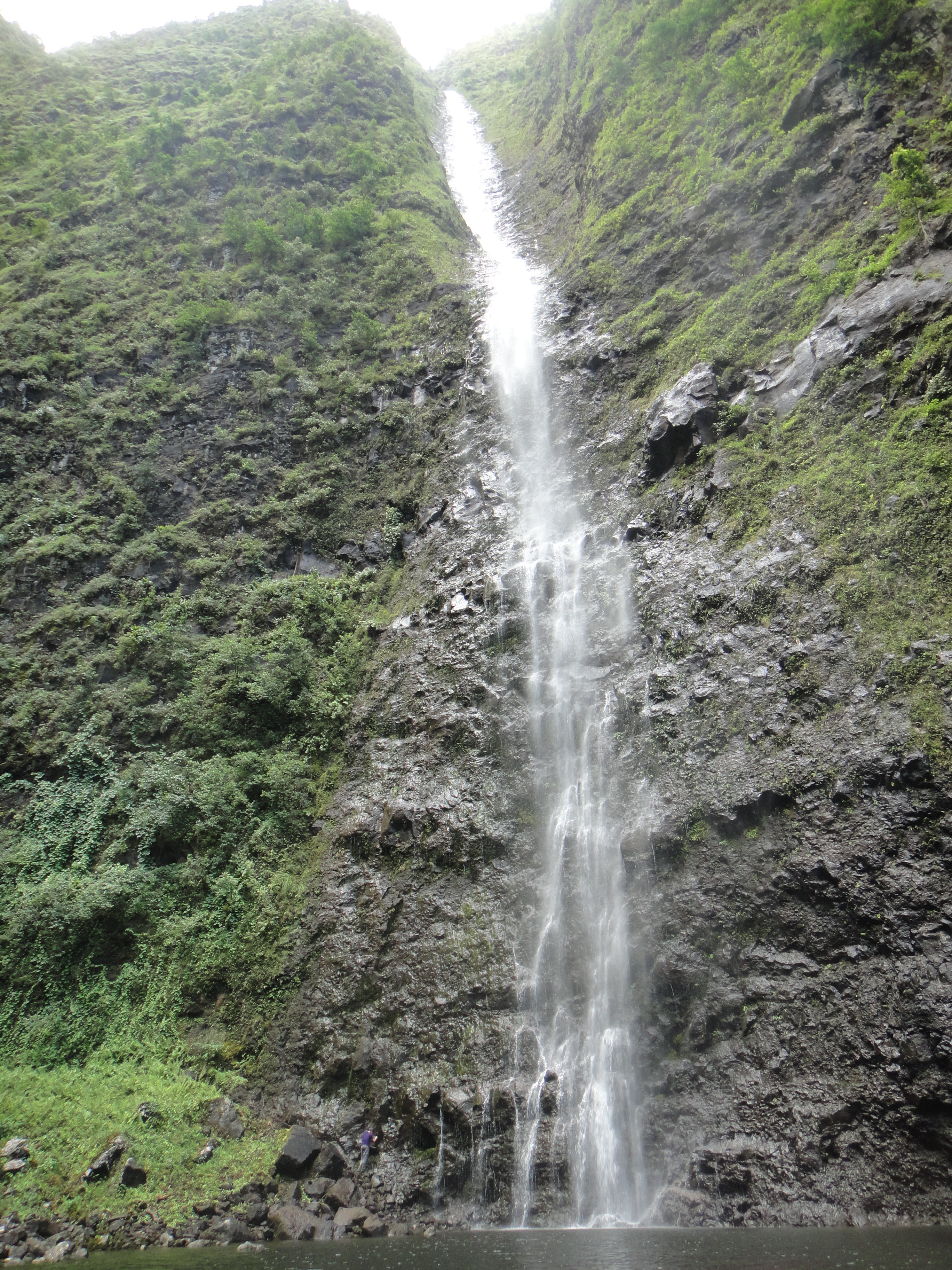Healthy lives
Why rare beauties lure me to Hawaii
Luckily for evolutionary geneticist Dr Angus Davison, some of the snails he studies are only found in the remote mountains of a Pacific paradise...
To most people Hawaii may bring to mind stunning beaches, Elvis, cocktails or pineapple-based pizza-toppings. While I like and enjoy almost all of these, the Hawaiian Islands have become a destination for me because of the snails that live there.
My research at the University of Nottingham focuses on the evolution, development and genetics of snails. Although the majority of the work is lab-based, fieldwork has long been an essential element, involving travelling to regions of the world (in the pre-Covid era) that have many more interesting species than the UK.
Prior to human occupation, there were over 750 species of land snail on the Hawaiian Islands, most of which are found nowhere else on earth. According to local folklore, the trees were so dense with snails that they could be heard singing at night.
The snails don’t actually sing - crickets take the credit - but the snails are beautiful and unusual. ‘Beautiful’ illustrated by the traditional ‘lei’ necklace, often made of shells, that visitors received on arrival. ‘Unusual’ because several species frequently contain individuals that have shells that coil clockwise or anti-clockwise, with mirror-image bodies to match. *
 Image from Flickr. Snail on a leaf.
Image from Flickr. Snail on a leaf.
Back in 2019 I went on a snail safari to locate, collect and hopefully breed one of these snail species. The family of snails to which it belongs, Lymnaea, is found worldwide. If you have a pond in your garden or take a look in the ponds and stream on the University of Nottingham campus, then it is likely to contain snails of the same family. However, while the snails in your pond will nearly always have shells that coil clockwise, the Hawaiian snails coil both ways, clockwise and anti-clockwise – which is what makes them very special. Studying these rare ‘lefties’ could help unlock the mystery of how body asymmetry is defined, including in ourselves.
The difficulty in studying this Hawaiian snail is that it is only found in waterfalls in the high mountains, frequently requiring helicopter access, and always requiring multiple permits (11 is the record for one site). The upside of the helicopter access is that it is rapid and gives amazing views of ‘Jurassic Park’ valleys. The downside is that if the clouds come down, we could be stuck for several days in the wettest mountains in the world.
 High mountain waterfall on Kauai. For scale, Angus is bottom left in a purple t-shirt.
High mountain waterfall on Kauai. For scale, Angus is bottom left in a purple t-shirt.
The trips can be quite exciting because landing sites are ad hoc. A travel highlight of a previous trip was jumping from a hovering helicopter onto a fern covered, precipitous mountain top, no bigger than a small back yard. A biological highlight was being the first scientist to capture on video the mating of a pair of mirror-imaged snails, a feat that most other snails cannot manage.
This last visit we were lucky. We flew in over Sacred Falls (Kaliuwa’a) in the Ko’olau mountains of Oahu, just under the clouds, to land at a well-maintained basecamp. From there, we hiked both up and down the river looking for snails, eventually finding them in a wet seep between two big waterfalls. These were returned to the lab and Bishop Museum in Hawaii, and DNA extracted. Now, some two years after that trip, I have sequenced the genome, or genetic code, of several individuals, aiming to use this information to understand how their genes enable these snails to make mirror images shells and bodies. Covid may have prevented further trips for now, but we can still glean valuable information from the genes.
In the future, I aim to get the snails to the University of Nottingham. I have permission to import them and am seeking to find a USDA vet that can approve their export. My Hawaiian collaborators at the Bishop Museum and the Snail Extinction Prevention Program would like to extend their existing breeding, survey and conservation effort to include these previously neglected fresh-water snails. The particular conservation issue is that although the mountains may appear pristine from a distance, invasive species and the extraction of water for agriculture are causing significant damage to the native species.
This research could not have gone ahead without the help of multiple individuals and US government agencies, for which I am grateful, including David Sischo (Snail Extinction Prevention Program), Norine Yeung, Ken Hayes (Bishop Museum), Vincent Costello (Washington State Guard), Bernice Pauahi Bishop Museum, Oahu Army Natural Resources Program, Hawaii Department of Land and Natural Resources Snail Extinction Prevention Program. Funding for the trips came from the National Science Foundation, Hawaii Department of Land and Natural Resources Snail Extinction Prevention Program, University of Nottingham and Genetics Society.
*You can recognise the chirality of most snails, by following the spiral from the top of the shell. If the coil is clockwise then it is the common ‘dextral’ type, whereas anticlockwise are ‘sinistral’. If you do happen to find an anticlockwise pond snail, they are most likely from a different group, Physa, which only go the other way – but do send me a photo if in any doubt.
Dr Angus Davison
Dr Angus Davison is an Associate Professor and Reader in Evolutionary Genetics in the School of Life Sciences, where his lab uses snails to understand evolutionary and developmental genetics.